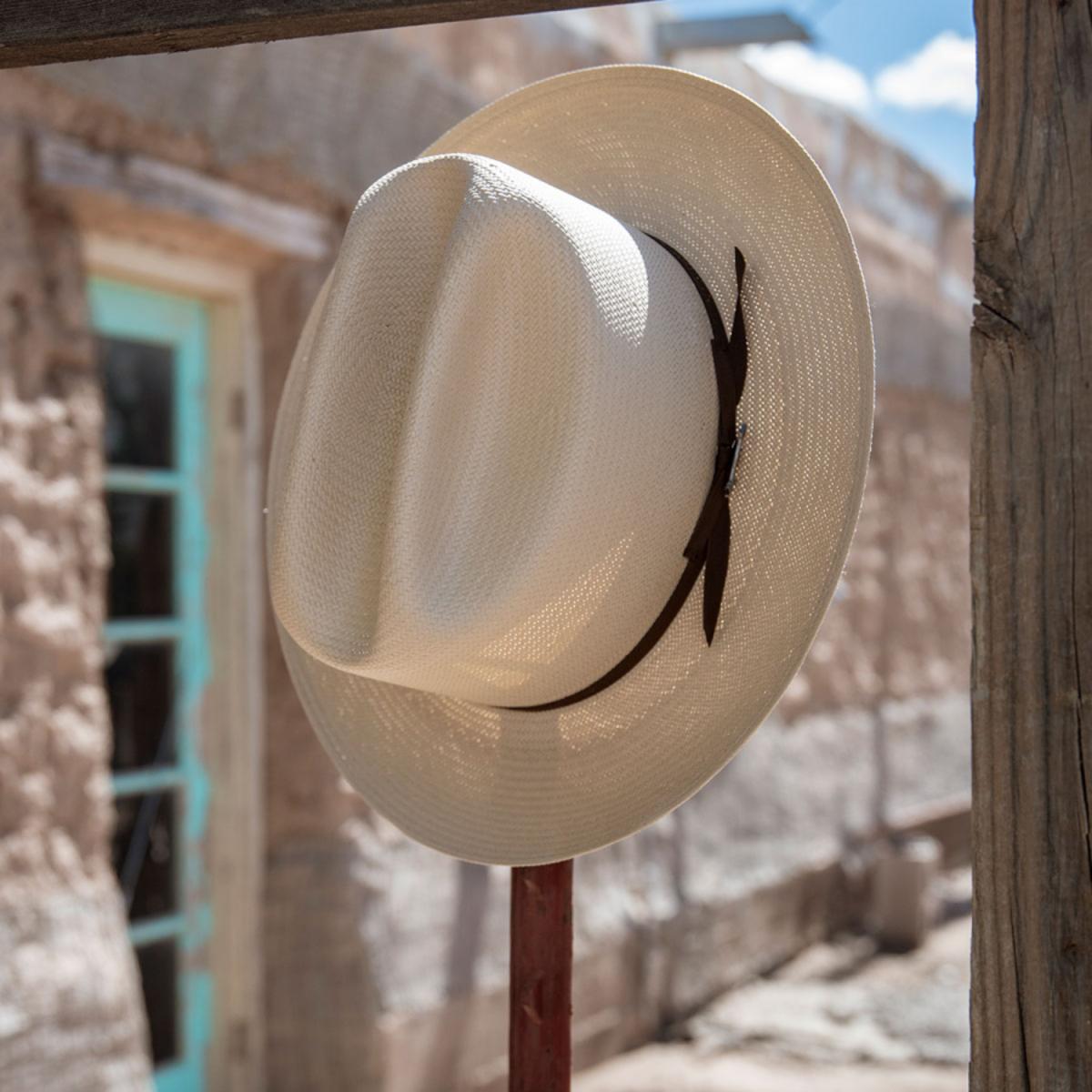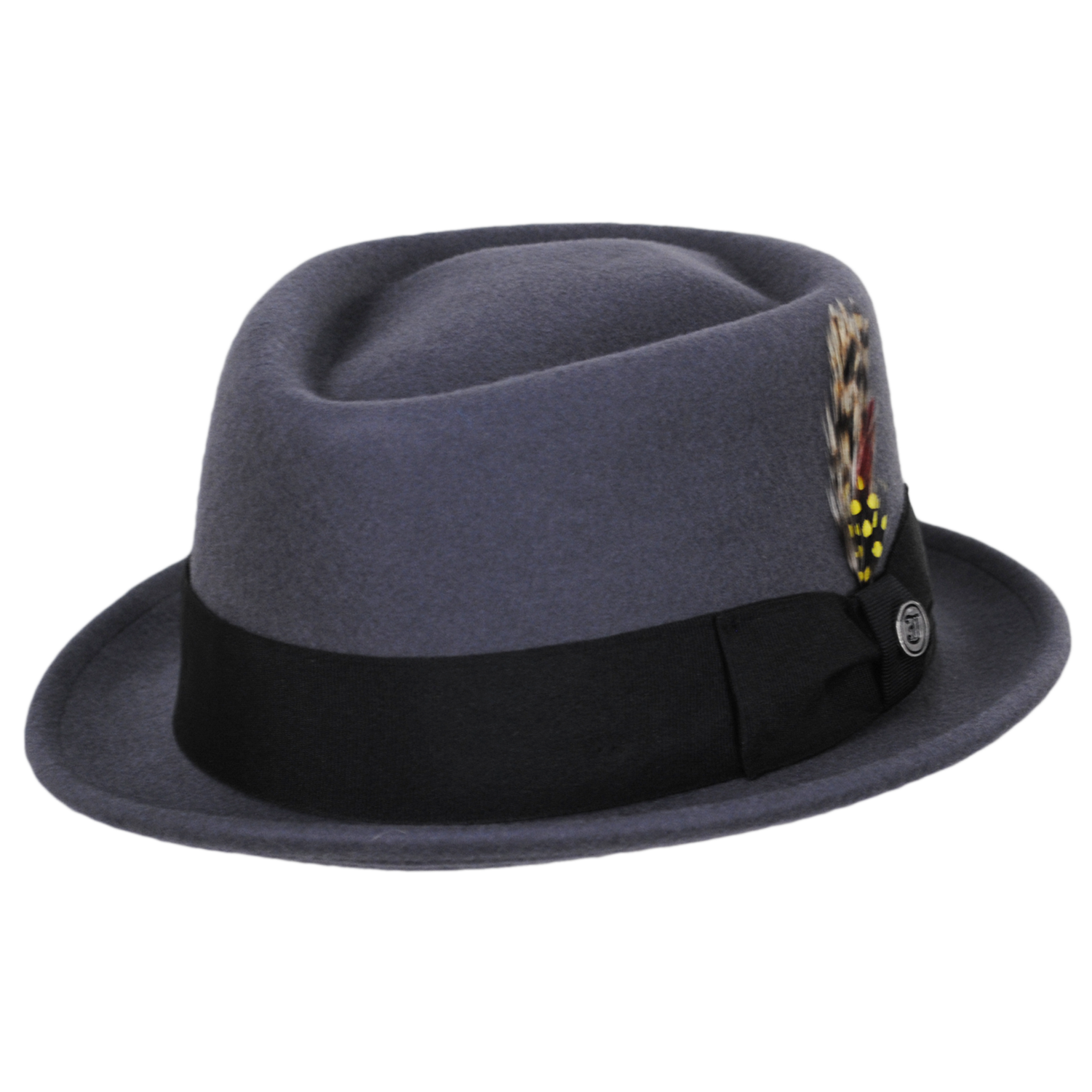Hat Care

Your hat is an investment in you. Read our tips to help extend your hat's life.
Read our General Hat Care Tips for generalized care tips including handling, storage, cleaning, and more.
Read our Hat Care blog articles for specialized care tips according to hat material.
Can't find the answer to your question(s) below? We'd love to help!
PH | 1-888-847-4287 or 619-906-4440
EM | info@villagehatshop.com
General Hat Care Tips
HANDLING
- Always handle your hat by its brim NOT its crown.
- Avoid touching or handling your hat with dirty or oily fingers.
- Avoid resting your hat on a flat surface. If you must, ensure you place the hat upside down on its crown to help maintain the shape of its brim. See "STORAGE" below for more details.
- Avoid getting your hat wet unless it is meant to be water-resistant. If you get caught in the rain, allow your hat to dry completely before attempting to reshape it. See "PROTECTING" below for more details.
STORAGE
There are many ways to store your hat depending on hat style and duration of storage.
- In general - It is best to rest or store your hat upside down on its crown while resting on a flat surface. This applies most to brimmed hats (e.g. fedoras) so that its brim shape is maintained.
- Short term storage - Place your hat on a hat stand, hat block, hat tree, or hook. This is safest in terms of maintaining your hat's shape.
- Long term storage - Use a dedicated Hat Box to help protect your hat from dust, light damage, and drying out. Store the hat upside down on its crown unless the box includes a cradle or stand on which the hat can be placed right side up.
No matter your hat style or material, there are three rules of thumb to keep in mind in order to extend its lifetime:
- Avoid keeping or storing hats in direct sunlight such as by a window or in a car. This avoids bleaching and UV damage.
- Avoid keeping or storing hats near a heat source such as a heater or window. This protects your hat from drying out.
- Avoid keeping or storing hats in high-humidity areas such as near a bathroom. This helps avoid mold.
CLEANING
Cleaning and maintaining your hat depends largely on its material. See dedicated hat material sections below for more specific care tips.
General Tips:
- Dust your hat regularly when not stored in a hat bag or box.
- Use a soft-bristled brush for most hats: a dark bristled brush for dark-colored felt or fabric; a light bristled brush for light-colored felts or fabrics. How-To Video: Using a Hat Brush to Clean Your Hat
- Use a soft cloth to dust straw hats.
- Always follow manufacturer care instructions (if any).
- Cleaning vintage or delicate hats is best left to professionals. Inquire with a dry cleaner near you.
- Machine-washing hats, even soft fabric hats or caps, is never recommended. No hats are truly machine washable.
General Stain Care:
- For mild surface stains - Most mild surface stains will easily come off with gentle brushing or dabbing. Use a soft-bristled hat brush or lightly moistened soft cloth to brush or dab in a gentle clockwise motion over the stain until removed.
- For resistant surface stains - Stains that cannot be removed with a brush or damp cloth, might be best removed using a foam or rubber Hat Sponge. The slightly sticky sponge surface should coax surface stains away.
Salt (Sweat) Stains:
To remove salt (i.e. sweat) stains from your hat's sweatband, we recommend spot cleaning.
- Place your hat upside down on its crown exposing its interior. Flip the sweatband up and out the whole way around.
- Make a solution of water and mild detergent, shampoo, or facial cleanser. Moisten a soft, clean cloth with the solution and gently dab onto the sweatband.
- Alternatively, a 1:1 solution of white vinegar (or rubbing alcohol) and water, placed into a spray bottle, may be used. Carefully spray the sweatband with the solution.
- Use a separate clean cloth moistened with only water to "rinse."
- Let air dry completely before folding the sweatband back into the hat.
For specialized care tips specific to your hats' material, see "Hat Care by Hat Material" section below.
PROTECTING
The protection your hat might need against the elements largely depends on its material, the climate/weather in which it will be used, and/or your intended use for the hat.
In General:
- It is best to avoid getting ANY hat wet unless it has been treated with appropriate products to be water-repellent or it is made of waterproof materials such as vinyl or nylon.
- This applies to "naturally" water-repellent materials types such as fur felt or smooth leather.
- Untreated hats are subject to losing their shape, firmness, or even shrinking/stretching after getting wet.
- If your hat does get wet - whether treated or not - you should allow it to dry completely before attempting to reshape or wear it again. Set the hat upside down on its crown, fold the sweatband up and out, and allow to air dry.
Protect All Hats from Water
- Water-repellent treatment products such as Bickmore Gard-More Spray are recommended to protect your hats against water AND future stains. Always follow manufacturer instructions and spot treat for color-fastness.
- Even when treated to repel water, it is best to avoid soaking your hat completely or getting caught in a downpour.
- For those who live in rainy climates, it is best to invest in Hat Rain Covers or to purchase styles specifically marketed as "Rain Hats" - usually made of vinyl or nylon.
- For water sport enthusiasts, it is best to purchase outdoor hat styles made to be quick-drying or water-repellent.
Additional Protections for Leather Hats
- Despite the hardwearing nature of leather, all leather products, including leather hats, need to be conditioned and after each regular cleaning.
- Products such as Bickmore's Bick 4 Leather Conditioner or Distressed Leather Conditioner are formulated to help keep your leather hat supple and looking its best. Follow manufacturer instructions and spot-treat for color-fastness.
- Like other material types, to protect against future dirt, oil, or water stains it is best to use a finishing treatment such as Bickmore Gard-More.
STEAMING
Steaming is a great way to refresh most hats. It is also a great technique for re-shaping your hat and can be useful when dealing with set-in felt stains. See below for generalized steaming tips.
Always keep a safe distance from the steam source, at least 6 inches, to prevent burns to your hands and/or hat damage.
- Use a dedicated steamer or steam from a kitchen kettle to produce a steady stream of steam.
- Briefly expose the affected area(s) to steam (3-5 secs) and smooth with clean fingers.
- Using Steam to Re-Shape Your Hat
STRETCHING
If your hat shrinks over time or it is simply to small to begin with and needs to go up a size or two, stretching can be a great option.
*It is not recommended to stretch a hat more than 2 hat sizes. That is, from a size 7 (56cm) to a size 7 1/4 (58cm). Attempting to stretch a hat more than this may result in warping of its shape and/or damage to delicate materials such as straw.*
Generally, there are two options when it comes to hat stretching:
- Contact a local hatter in your area and inquire about professional hat-stretching services.
- Stretch it yourself at home. See below for helpful tips.
Stretching Your Hat at Home
- With a hat stretcher - Steam your hat using a dedicated steamer or kitchen kettle to soften the hat. Follow manufacturer instructions. We recommend using a Hat Stretcher for best results.
- Without a hat stretcher - Stretching a hat without a dedicated hat stretcher is possible, but the size increase will be less (no more than 1 hat size, e.g. size 7 to 7 1/8). Simply steam to soften the hat, place the hat over your bent knee, and rotate while tugging gently to stretch.




